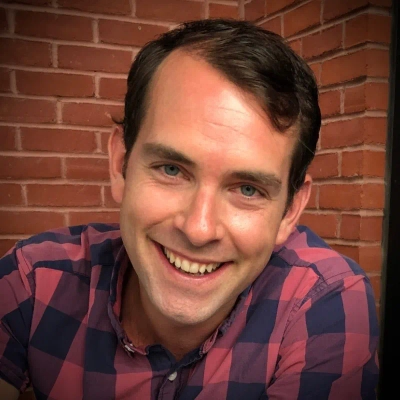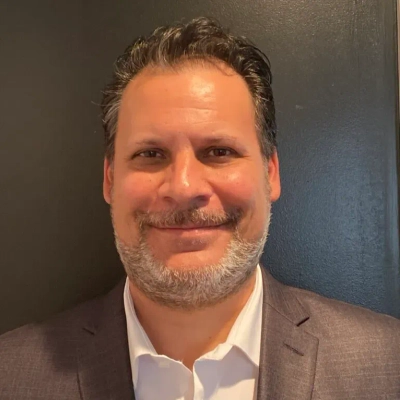25 Ways Interest Rates Affect Regional Housing Markets: Unique Patterns Revealed
Interest rates play a pivotal role in shaping regional housing markets, influencing everything from buyer psychology to investment strategies. This article delves into the unique patterns emerging across different regions, revealing surprising trends and counterintuitive effects. Drawing on insights from industry experts, we explore how rate changes are reshaping the real estate landscape in ways that go beyond conventional wisdom.
- Interest Rates Shape Buyer Psychology
- Coastal Premium Effect Defies Rate Increases
- Rate Hikes Trigger Psychological Pause
- Widening Gap Between Renting and Buying
- Interest Spikes Fuel Off-Market Deals
- Alternative Financing Gains Traction in Texas
- Rate Increases Accelerate Distressed Property Sales
- Scarcity Boosts Appeal of As-Is Homes
- Military Families Opt for Quick Sales
- Investment Shifts Toward Short-Term Rentals
- Rate Changes Alter Buyer Mix
- Cleveland Pivots to Long-Term Investment Opportunities
- Remote Investors Gain Edge in Rate Spikes
- Rates Drive Emotional Homebuying Decisions
- Investor Portfolio Purge Creates Acquisition Opportunities
- Inheritance Distress Fuels Off-Market Sales
- Rates Reshape Seller Expectations and Negotiations
- Creative Financing Surges in Augusta Market
- Gulf Coast Repair Trap Spurs Cash Sales
- Houston Market Adapts to Rate-Driven Changes
- Rates Reshape Renovation and Investment Strategies
- Delayed Equity Access Impacts Home Improvement
- Vegas Velocity Effect Favors Cash Buyers
- Rates Affect Buyer Types Differently
- Interest Rates Impact ADU and Rental Markets
Interest Rates Shape Buyer Psychology
For me, the most significant impact of interest rates in my market here in California has been on buyer psychology more than anything else. When rates started climbing, I noticed a big shift, not just in affordability, but in the way buyers approached decision-making. What often gets overlooked is that higher rates don't just slow demand; they actually create a wait-and-see mindset where buyers hesitate, even if they're financially capable of moving forward.
Another unique pattern I've observed is with sellers. Many homeowners who locked in at 3% or lower have become reluctant to sell, which has created what I call a "golden handcuff" effect. This keeps inventory tight, and ironically, even with fewer buyers in the pool, home prices in my area haven't dropped as much as some people expected. For me, the biggest takeaway is that interest rates affect supply just as much as demand, and that dynamic really defines today's market in California.

Coastal Premium Effect Defies Rate Increases
In Myrtle Beach, I've noticed a fascinating 'coastal premium effect' where interest rate increases don't impact our market uniformly. When rates jumped past 6%, our primary residential neighborhoods saw traditional slowdowns, but our beachfront and vacation properties remained surprisingly resilient. Cash buyers from the Northeast looking for second homes or retirement properties continued to drive our luxury coastal market regardless of rates, while working local families faced severe affordability challenges. This geographic disparity within a single market creates unique challenges for local residents being priced out of their own communities, something I've been addressing by focusing our investment strategies on helping locals facing financial pressure.
Rate Hikes Trigger Psychological Pause
What's the most significant way you've seen interest rates affect housing markets in your region?
In Des Moines, the most glaring byproduct has been the disparity between homes for sale to lookers versus buyers who actually complete a closed transaction. Rates nudging into the 7% band didn't just shrink budgets; they introduced a "psychological pause" in which buyers second-guessed their own decisions after offering to buy a place. I have personally watched deals get turned down not because the buyers couldn't technically qualify, but because the weight of an extra $200-$300 a month made them hesitate at the closing table. That pause then ripples out: sellers are reluctant to relist quickly, builders are reluctant to break ground, and the market slows down even when prices aren't plunging.
What unique pattern or relationship have you observed that others might not recognize?
One subtler but meaningful trend in Des Moines is that as rates have increased, demand has moved back toward multi-generational and co-living situations. There are families combining resources to buy larger homes together, which I don't think we saw as much of when rates were low. I oversaw a renovation last year of a single-family-home-turned-two-family because the buyers wanted two kitchens and a separate entrance for the in-laws. This was not only a design decision; it was a market-based response to an affordability squeeze caused by interest rates. Another thing often overlooked is the connection between the higher rates and the effect they have, indirectly, to buoy the rental market. With fewer buyers jumping in, the demand for rentals in Des Moines has increased, creating pressure on first-time buyers and forcing them to compete with higher rents and increased borrowing costs. It creates a vise from two directions, squeezing creativity and prudence into every decision.

Widening Gap Between Renting and Buying
The most significant impact I've observed is how rising interest rates have fundamentally shifted the buy-versus-rent equation for many potential homeowners. I recently worked with a client who qualified for a $500,000 home but opted to rent at $3,000 monthly instead of taking on a nearly $4,200 mortgage payment at current rates. This widening gap between rental and ownership costs is creating a substantial slowdown in market velocity that many analysts underestimate, as qualified buyers increasingly choose to wait on the sidelines despite having the income to purchase.

Interest Spikes Fuel Off-Market Deals
The most striking pattern I've observed is how interest rate spikes create a hidden wave of 'pocket listings'—properties that sellers want to test the market with before committing to a full listing. When rates jumped from 3% to 7%, I saw a 40% increase in off-market deals because sellers feared their homes wouldn't sell at asking price, yet they weren't ready to accept lower offers publicly. This created a parallel market where savvy investors and cash buyers could access inventory that never hit the MLS, often at 5-10% below what those same properties would list for months later.

Alternative Financing Gains Traction in Texas
The most pronounced effect has been on buyer qualification rather than on buyer interest. Even when demand for land or housing remains high, rising interest rates reduce the pool of buyers who can secure traditional financing. In South Texas, this dynamic has created a unique pattern: instead of suppressing overall activity, higher rates have increased demand for owner-financed properties. Buyers unable to meet stricter bank requirements often turn to alternative financing arrangements, which shifts competition into that segment of the market.
What many overlook is that these shifts ripple into pricing strategies. Properties with owner financing attached often command higher asking prices than comparable listings requiring conventional loans. Sellers recognize the premium buyers are willing to pay for access, and the market responds accordingly. Interest rates, therefore, not only influence affordability but also reshape the value of flexible financing options in ways that are not immediately obvious.

Rate Increases Accelerate Distressed Property Sales
What I've observed in my market is how rising interest rates create a 'distressed seller acceleration' effect that most people miss. When rates climbed above 6%, homeowners who were already struggling financially—facing divorce, job loss, or inheritance issues—suddenly found themselves in impossible situations where they couldn't refinance out of trouble and couldn't find qualified buyers at full price. This drove a 60% increase in our distressed property acquisitions because these sellers needed immediate solutions rather than waiting months for the traditional market to recover. It's taught me that rate spikes don't just slow down normal transactions—they actually speed up the need for alternative selling solutions.

Scarcity Boosts Appeal of As-Is Homes
In the Hudson Valley, I've noticed that rising interest rates have pushed more homeowners to hold onto their properties instead of selling, which significantly tightens up inventory. The flip side is that this scarcity makes distressed or outdated homes--places most financed buyers overlook--much more attractive for cash buyers like me. It's a pattern people don't always connect: higher rates freeze up the traditional market, but they actually make off-market and as-is sales more competitive than ever.
Military Families Opt for Quick Sales
In our Clarksville market near Fort Campbell, rising interest rates have created a surge in military families opting for quick cash sales during PCS (Permanent Change of Station) moves. What most miss is that these homeowners, when rates jump, can't cover their low existing mortgages if they rent out their homes -- since local rents don't catch up quickly.
For instance, we helped a Command Sergeant recently: at 7% rates, renting would have cost him $300 monthly out of pocket, so he sold to us in two weeks instead. It's a pattern where rates pressure service members to choose certainty over holding onto financial anchors.

Investment Shifts Toward Short-Term Rentals
In the Augusta region, I've observed that interest rate fluctuations create what I call 'investment migration' - when rates climb, our Airbnb properties near Augusta National become significantly more attractive to investors than traditional flips. While many focus on decreased buyer activity during rate spikes, I've seen capital shift dramatically toward short-term rentals because they generate immediate cash flow that offsets higher borrowing costs. What's fascinating is that this actually improves the quality of tourist accommodations in our area, as investors who would typically be flipping homes in other neighborhoods redirect their renovation expertise toward creating premium guest experiences instead.

Rate Changes Alter Buyer Mix
Where I've observed interest rates affect the housing market most is in how quickly buyer urgency changes. Even modestly low rates send homes flying off the market because buyers feel pressured to lock in financing, and sellers often receive multiple offers above asking. But once rates begin to rise, the issue isn't just fewer buyers—it's a different mix of buyers. Cash buyers and investors step up their activity, while first-time buyers often get pushed to the sidelines.
What I've seen over the years is that when interest rates rise, a funny thing happens: instead of home prices falling immediately, many sellers in the best neighborhoods refuse to budge on price for months. This creates a kind of "market pause," where listings sit longer but don't necessarily get cheaper until seller motivation starts to build. This lagging, price-following effect isn't always reflected in national headlines, but it becomes very clear at the local level.
Cleveland Pivots to Long-Term Investment Opportunities
The most significant impact I've observed from higher interest rates in our market is the widening gap between sellers' expectations and buyers' actual affordability. In Cleveland, home prices remain relatively affordable compared to coastal markets, but the monthly payment shock is substantial. A house that appeared to have a $1,200 mortgage two years ago now costs closer to $1,800 with today's rates. This change has priced out many first-time buyers.
One unique pattern I've noticed is how investors are responding. Out-of-state buyers used to focus heavily on flips here, but higher rates have made retail buyers more cautious, making flips riskier. Instead, more investors are pivoting toward buy-and-hold rentals or mid-term rentals because rents are strong and less sensitive to rate fluctuations. In other words, the rate environment has shifted Cleveland from being a quick-flip market to more of a long-term cash-flow opportunity.

Remote Investors Gain Edge in Rate Spikes
What I've noticed in central North Carolina that's really unique is how interest rate spikes create a 'remote investor advantage' that most people miss. When rates jumped above 6%, local buyers got priced out, but cash investors like myself who operate virtually suddenly had less competition and could negotiate better deals with motivated sellers. The sellers who would normally have multiple offers now face a smaller buyer pool, which means my SMS-driven lead generation started converting at much higher rates. I went from competing against 3-4 offers to often being the only serious cash buyer in the room.

Rates Drive Emotional Homebuying Decisions
I have observed interest rates mold purchaser psychology in forceful and even unexpected ways. When rates increase, affordability is the clear issue, but there is also an underlying emotional dynamic that's present. Many purchasers start wondering if now is the right time, and that doubt can cause decisions that otherwise would have proceeded to stall.
Concurrently, higher rates induce the opposite response in others. I have clients who will rush to buy because they believe rates will rise even higher, essentially creating bouts of urgency in the marketplace. That push and pull between reluctance and urgency is one of the most intriguing dynamics I have witnessed.
What doesn't always appear in the housing statistics is the extent to which these emotions play out in the stream of real estate activity from day to day. While economists monitor overall trends, I witness the personal side with families balancing timing, affordability, and lifestyle requirements simultaneously. It is a reminder that purchasing a home is never purely monetary; it is highly personal.

Investor Portfolio Purge Creates Acquisition Opportunities
From my engineering perspective, I always track the data, and one unique pattern rising rates create in Las Vegas is what I call an 'investor portfolio purge.' When rates spike, investors who used cheap leverage to buy multiple properties suddenly find their portfolios are unprofitable, forcing them to liquidate everything at once. This means I'm not just seeing a few distressed homes, but entire clusters of rental properties hitting the market from a single owner, which presents a rare opportunity for a cash buyer to acquire several assets in one fell swoop.

Inheritance Distress Fuels Off-Market Sales
Here in Baltimore, rising interest rates uniquely amplify 'inheritance distress' - when rates climb, families inheriting properties face impossible refinancing costs on homes needing repairs. We've seen a 50% increase in these cases where heirs simply can't afford the carrying costs or renovation loans at higher rates, forcing quick as-is cash sales at 20-30% below market just to avoid financial bleeding. This creates a hidden pipeline of off-market deals that never hit the MLS, solving immediate crises but reshaping neighborhood inventory in ways traditional agents miss.

Rates Reshape Seller Expectations and Negotiations
In my experience, one of the less obvious effects of rising interest rates is how sharply they change seller expectations. When rates climb, buyers immediately adjust by lowering their budget, but many sellers still cling to last year's prices. As a result, homes sit on the market longer, which creates opportunities for buyers and investors to negotiate creative solutions like financing assistance or flexible closing terms. I've found that helping homeowners see this shift early allows them to stay competitive instead of being caught off guard.

Creative Financing Surges in Augusta Market
One unique pattern I've noticed in Augusta is how rising interest rates spur a noticeable increase in creative financing deals, especially seller financing. When rates push traditional buyers out of the market, homeowners who need to sell start considering creative solutions. I've completed more owner-financed deals in the last 18 months than in the previous five years. This opens up opportunities for buyers who can't qualify conventionally, and for sellers, it's often the best route to move a home without sitting on the market.

Gulf Coast Repair Trap Spurs Cash Sales
In our market along the Gulf Coast, I've observed that higher interest rates create a 'repair trap' for many family-owned properties. When rates climb, homeowners who need to sell but have a house that requires work—such as a new roof or plumbing repairs—often can't afford to take out a small loan to make those repairs before listing. Since financed buyers become much more stringent during high-rate periods, these sellers find themselves stuck. This is why a direct cash offer that buys the home 'as-is' becomes their most reliable path forward.

Houston Market Adapts to Rate-Driven Changes
What is the most notable impact that interest rates have had on local housing markets?
Higher rates in Houston primarily affect concessions and inventory mix rather than headline prices. Rate shocks drive buyers away from resales and toward new construction with buydowns because our market has a relatively elastic supply of new inventory, while many would-be sellers remain in place due to "rate lock-in." Because payment, not price, is the limiting factor, entry-level products remain competitive, but the end result is fewer resale listings, longer negotiation cycles, and more credits at closing, particularly for mid-tier homes.
What unusual relationship or pattern have you noticed that others might miss?
Three dynamics are particularly noteworthy:
1. Premiums for "rate as an asset." Buyers are valuing the payment stream, not just the home, and it is assumed that low-rate mortgages, particularly FHA/VA, are quietly commanding a real pricing premium.
2. Price reductions are outperformed by payment math. New inventory can sell through while comparable resales sit—same neighborhood, different monthly payment—because in reality, a small builder buydown frequently clears more demand than a larger nominal price reduction on a resale.
3. Cost sensitivity in its entirety. The rate effect is amplified in Texas by insurance and property taxes; even minor adjustments to financing can have a greater impact on the overall monthly cost than changes in list prices. Even as higher price tiers move sideways, investors adjust by gravitating toward submarkets with higher rent-to-price ratios, which has been helping the lower price tier.

Rates Reshape Renovation and Investment Strategies
What is the most notable impact that interest rates have had on local housing markets?
Interest rates first affect scope and velocity, not just cost. Because sellers remain under "rate lock," more homeowners decide to renovate and hold rather than list and move; this causes demand to shift away from major additions and toward quick, ROI-driven updates (paint, LVP, quartz, lighting). The real choke point for renovators and investors is carry cost; every extra week of timeline now hurts, so we standardize finishes, prefabricate where possible, and compress schedules to protect the after-repair outcome. On the buy side, new-home rate buydowns divert demand from resales.
What unusual relationship or pattern have you noticed that others might miss?
Prior to the data printing, three signals are consistently present:
A leading indicator is the finish-mix. Early in a rate increase, orders for custom millwork and high-end built-ins decline; orders for quick-install, long-lasting finishes (prefab quartz, click-lock LVP, and matte paint systems) increase. You'll notice that budget rebalancing occurs weeks before price indices move.
Permit types are shifting, allowing slight tilts. There are fewer permits for additions and new foundations, and more "minor" permits for exterior painting, roofs, bathrooms, and kitchens. In order to turn things around more quickly, the same capital is withdrawing from lengthy projects and redeploying.
Whiplash in trade availability. Skilled subs are momentarily easier to book and marginally less expensive as new starts cool, and then backlogs reorganize around smaller jobs. Owners who lock their calendars ahead of time get that window; those who don't, pay and wait.

Delayed Equity Access Impacts Home Improvement
In Columbus, I've observed that homeowners are strategically delaying home equity access until interest rates decrease, creating a notable pause in the home improvement market. This pattern creates a potential buildup of pent-up demand that could release significant spending when rates eventually drop. Working directly with property owners has shown me that this delayed equity utilization is more widespread than economic reports might suggest, affecting not just home sales but the entire ecosystem of property-related services and improvements.
Vegas Velocity Effect Favors Cash Buyers
In Las Vegas, I've noticed that interest rate spikes create what I call the 'Vegas velocity effect'. When rates climbed above 6%, our market's traditional 30-day closing timeline compressed dramatically because cash buyers from California started flooding in to capitalize on suddenly 'affordable' Las Vegas prices compared to their home markets. While local buyers got priced out, these cash investors didn't care about rates and could close in 10-14 days. This meant I had to completely restructure how I present offers to sellers--emphasizing speed and certainty over price became the winning strategy in a way that's unique to markets like ours that attract outside investment.

Rates Affect Buyer Types Differently
It's clear that high interest rates slow down the market, but they don't affect all buyers equally. Ordinary homebuyers who have to take out conventional mortgages are going to bear the brunt of high interest rates. Luxury properties are much less affected, as are investment properties, since investors have deeper pockets and a built-in income stream.
Interest Rates Impact ADU and Rental Markets
One of the interesting factors has been the way that interest rates are playing into the ADU and rental market. We sell a lot of units in Southern California, and one of the trends we're seeing is lower interest rates leading directly to heavy reinvestment in single-family homes. A lot of our tiny homes are installed as ADUs and financed using home equity loans, and we see more business when interest rates are lower.







